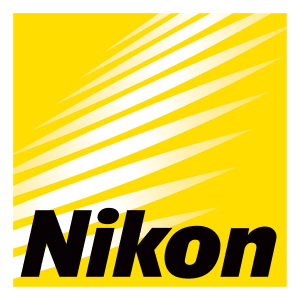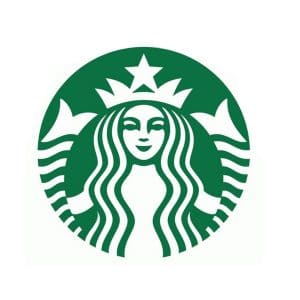Whether we realize it or not, color psychology is an essential component for marketers, as it has a significant impact on the way we perceive and react to content. In fact, color puts content into context, which is why it’s imperative to understand what different colors mean to individuals. Choosing the wrong color for your brand can potentially mean sending the wrong message—and because you only get one chance to make a first impression, you want to ensure you’re communicating clearly and effectively with your audience. With that in mind, we’ve broken down the major colors and what they relate to viewers.
Red
Powerful, energizing, and dynamic, red’s richness allows it to represent strong positive emotions such as love, passion, energy, and desire, as well as more alarming connotations such as anger, danger, and warning. Depending on the context in which it is used, red can embody soft affection or demanding brute force.

Red is the perfect choice for the streaming giant Netflix’s logo. The color’s ability to encompass a wide variety of emotions makes it ideal for reflecting the service’s extensive library of shows and movies, which ranges from rom-coms to horror and everything in between.
Orange
Combining red’s energy and influence with yellow’s conviviality, orange is an excellent representation of physical comfort, courage, friendliness, success, and confidence. It’s also known to be a particularly motivating color, as it lends a positive attitude and enthusiasm for life wherever it is used. However, orange can sometimes reflect a sense of ignorance and sloth.

Orangetheory Fitness’ logo uses orange to reflect the physical triumphs you’ll experience by signing up for a membership, and the confidence physical fitness will bring you. The color also elicits a motivation from the viewer, heightening their enthusiasm for the gym. In fact, this may be why the gym is notorious for its dedicated membership.
Yellow
Yellow is synonymous with joy, energy, warmth, happiness, perkiness, brightness, and intellect. Like the classic song “You Are My Sunshine” suggests, yellow truly can make someone happy when skies are gray. While it can sometimes be viewed as irresponsible and unstable and cause anxiety, the color’s ability to provide inspiration makes it a viable option for creative brands like Nikon. As a brand focused on inspiring creators and capturing the happiest moments in life, Nikon’s choice to use yellow in its logo endears it to professional and amateur photographers alike.

Green
Though the expression “green with envy” may cast the color in a bad light, green is particularly useful for lending a sense of freshness, comfort, revitalization, balance, harmony, and healing to wherever it is used. As one of the most prevalent colors found in nature, green’s close ties to the environment allow it to reflect serenity, growth, health, and life. Starbucks’ iconic green siren draws inspiration from the locally-sourced, organic beans it brews, and the brand’s focus on creating an experience around its product. The coffee chain’s green is intended to promote the peaceful, calming atmosphere the shops have, as well as its product’s all-natural origins and high-quality consistency. Over the years, Starbucks has become a source of comfort for many people and a vital part of their daily routine, and that may be thanks to the brand’s use of green.

Blue
Blue has an interesting effect on viewers, causing a more emotional reaction rather than a physical one. Calming, authoritative, reassuring, trustworthy, reliable, responsible, and dependable, blue is overall one of the most popular colors. The sense of tranquility and credence it invokes is especially helpful when building relationships in spaces where people are more likely to be cynical (e.g., marketing). Using blue requires you to strike the right balance, as using too much of the cool color can make your audience perceive you as aloof, cold, and fearful.

Trust and reliability are critical in the technology space. It’s essential to establish yourself and your products as dependable and cutting-edge and provide an intuitive and practical experience. With this in mind, IBM adopted a blue logo.
Purple
Possessing the power and energy of red with the reliability and stability of blue, purple represents the ideal balance between the emotional and the grounded. Purple can, therefore, epitomize a wide range of emotions, including royalty, spirituality, luxury, imagination, and ambition, as well as mystery and moodiness. The SYFY channel capitalizes on the connotations of ideation and enigma to reflect the often zany, mysterious, unexplained, and creative nature of its shows.

Pink
As a softer, less intense shade of red, pink is a solid color that soothes rather than stimulates, allowing it to perfectly encapsulate caring, hope, understanding, and nurturing. It is also playful, sweet, and happy. The color pink makes us feel satisfied and cared for, two qualities that the company Lyft seeks to convey to its customers. Uber may lean into its more sophisticated vibes, but Lyft’s philosophy of getting you to your next adventure with a smile on your face via upstanding customer service is perfectly embodied in its vibrant pink logo. By using pink, Lyft sets itself apart as Uber’s coltish, kinetic cousin.

Brown
Friendly, earthy, conservative, structured, and secure, brown is a serious yet down-to-earth color that can be used where black might be seen as too intense. Though some view it as conservative, reserved, boring, and dogmatic, the color brown is an excellent sign of security, structure, and protection.

UPS’ brown and gold logo reassures customers that their packages and valuables are in good, reliable hands. Shipping with UPS means your items are protected and secure every step of the way.
Black
Adding an atmosphere of formality, sophistication, elegance, protection, and independence to wherever it is used, black is ideal for creating a bold, striking effect. As a powerful and dramatic color, too much black can overwhelm the senses and lead to associations with evil, mystery, sadness, and even death. No matter how you use it, black makes a statement, and making a statement was exactly what Apple’s founder Steve Jobs set out to do when he started the tech giant. The dynamic yet straightforward black apple calls back to the sleek, elegant, and classy products the company produces while cementing it as the powerful and influential force it continues to be today.

Gray
Gray, as the halfway point between black and white, is notable for conveying security, reliability, intelligence, and solidity. By mixing the sophistication of black with the purity and easiness of white, gray helps a company like Nintendo reconcile seemingly contradictory values. On one end of the spectrum, Nintendo’s reliable technology and games are not only innovative but also guaranteed to have a polish seldom seen in the video game industry. On the other end, Nintendo is about crafting experiences that engender a childlike wonder and joy in gamers young and old. Using gray in one version of their logo allows Nintendo to land in that sweet spot where both core values can be communicated clearly to consumers.

White
Because white has an equal balance of all colors, it can take on a variety of meanings. However, the feeling of equality tends to outweigh them all. White can also represent new beginnings and provides a fresh start, making it well suited for depicting goodness, innocence, purity, cleanliness, and peace. It characterizes the ideal, untampered version of something, but too much of it can cause loneliness, isolation, and emptiness.
The WWF (World Wildlife Fund) strikes the right balance of white to communicate its vision of a world untouched by human impact.

Struggling to find the right mix of colors for your brand? Reach out to our design experts at MOSAIC! With years of experience with color psychology, branding, and more, they are ready to make sure your message is communicated to your audience through all aspects of your brand.

